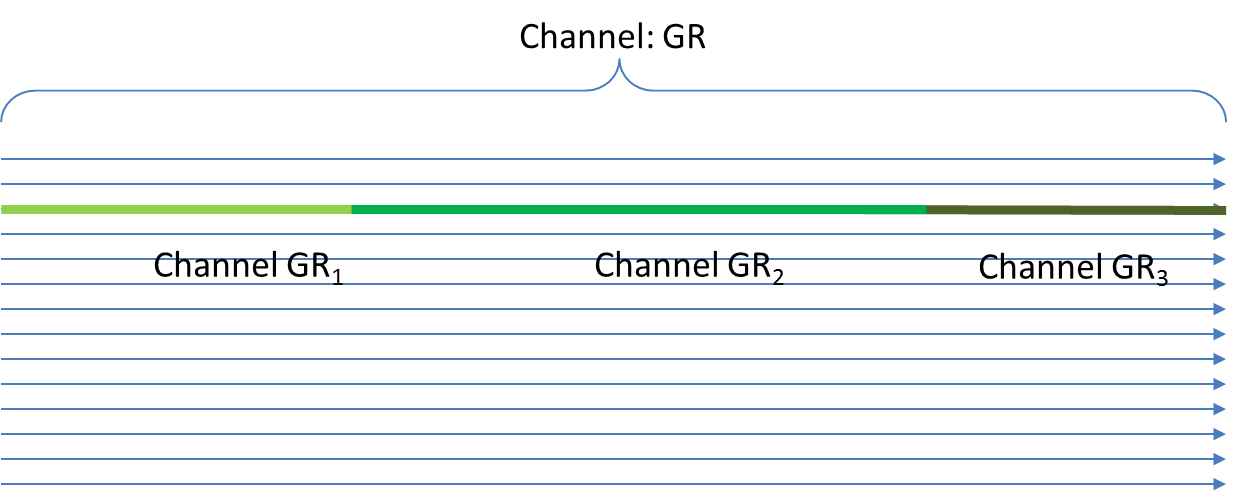5.3.1.2 ChannelDerivation
| Topic Version | 1 | Published | 11/11/2016 | |
| For Standard | WITSML v2.0 | |||
WITSML 2 introduces the notion of Channel Derivation. All channels are tagged with metadata that indicate the derivation of the data values on the Channel. If a Channel’s derivation is ’raw’, then it is an original copy of all points as recorded by the channel source. The possible values for ChannelDerivation are:
|
raw |
The channel contains raw measured data, directly from sensors. |
|---|---|
|
simulated |
Channel values are simulated. |
|
spliced |
Channel values are the result of ‘splicing’ or concatenating one or more channels of the same measure class. This can be used, for instance, to create a top to bottom composite channel from the values in multiple depth logs. (See Figure 5.3.1.2-1 .) |
|
sampled |
The Channel values are derived from sampling or decimating another channel. This can be used, for instance, to create derived channels that can send sampled data to visualization screens using less bandwidth. |
|
model |
Channel values are based on some computed or modeled results of values in one or more channels. Could be a moving average from a channel, addition of two channels, etc. |
In addition to the ChannelDerivation tag, the Channel object has an optional list of pointers to the Channels from which it was derived. Other than this metadata, the WITSML spec and the Channel object provide no specific information on how the splicing or sampling is actually done, which points came from which of the source channels, or what calculations are performed, etc. It is simply metadata for tracking purposes. In particular, a given store implementation may or may not optimize the storage of spliced channels such that the points are only stored once and re-assembled when the data for the spliced channel is retrieved.
